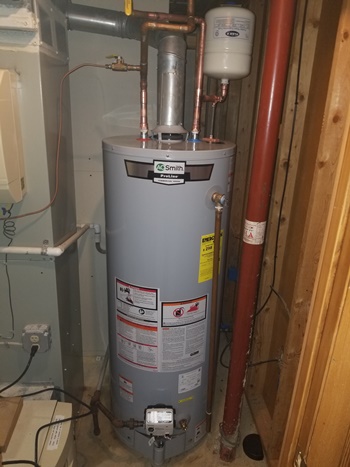Were you trying to locate help on Tips on Maintaining a Water Heater?

Warm water is necessary for everyday comfort, whether it's for a refreshing shower or cleaning dishes. To ensure your hot water system runs successfully and lasts much longer, routine maintenance is crucial. This short article supplies functional ideas and insights on exactly how to maintain your home's hot water system to avoid disturbances and expensive repair work.
Intro
Keeping your home's warm water system might seem daunting, however with a few basic steps, you can guarantee it operates efficiently for many years ahead. This overview covers everything from comprehending your warm water system to DIY upkeep ideas and understanding when to call in specialist assistance.
Importance of Preserving Your Warm Water System
Regular upkeep not only expands the life expectancy of your warm water system yet likewise ensures it runs successfully. Neglecting upkeep can cause decreased efficiency, greater power expenses, and also early failure of the system.
Indications Your Hot Water System Demands Maintenance
Recognizing when your hot water system requires attention can prevent significant concerns. Look out for indications such as irregular water temperature, unusual sounds from the heating system, or rusty water.
Understanding Your Warm Water System
Prior to diving into maintenance jobs, it's handy to understand the basic elements of your warm water system. Typically, this consists of the water heater itself, pipes, anode poles, and temperature controls.
Monthly Maintenance Tasks
Normal monthly checks can aid capture small concerns before they rise.
Flushing the Hot Water Heater
Purging your water heater removes sediment accumulation, boosting efficiency and extending its life.
Monitoring and Replacing Anode Rods
Anode rods avoid rust inside the tank. Inspecting and replacing them when worn is vital.
Checking and Readjusting Temperature Level Setups
Adjusting the temperature level setups ensures ideal performance and safety and security.
Do It Yourself Tips for Maintenance
You can perform a number of upkeep tasks yourself to keep your hot water system in leading condition.
Looking for Leaks
On a regular basis examine pipes and connections for leakages, as these can cause water damage and higher bills.
Examining Stress Alleviation Valves
Checking the stress safety valve guarantees it works properly and avoids excessive stress accumulation.
Shielding Pipelines
Protecting hot water pipelines minimizes warm loss and can save power.
When to Call a Specialist
While do it yourself maintenance is advantageous, some issues call for expert competence.
Complicated Problems Requiring Specialist Assistance
Examples consist of major leakages, electric issues, or if your water heater is continually underperforming.
Routine Professional Upkeep Advantages
Specialist upkeep can include thorough examinations, tune-ups, and guaranteeing compliance with security standards.
Verdict
Routine maintenance of your home's warm water system is important for performance, durability, and price savings. By adhering to these pointers and knowing when to look for professional aid, you can guarantee a reliable supply of warm water without unexpected disturbances.
How to Maintain an Instant Hot Water Heater
Before tinkering with your hot water heater, make sure that it’s not powered on. You also have to turn off the main circuit breaker and shut off the main gas line to prevent accidents. Also turn off the water valves connected to your unit to prevent water from flowing into and out of the appliance. 2. When you’re done, you have to detach the purge valves’ caps. These look like the letter “T†and are situated on either side of the water valves. Doing so will release any pressure that has accumulated inside the valves while at the same time avoid hot water from shooting out and burning your skin. 3. When the purge valves’ caps are removed, you have to connect your hosing lines to the valves. Your unit should have come with three hoses but if it didn’t, you can purchase these things from any hardware or home repair shops. You can also get them from retail stores that sell water heating systems. Read the user’s manual and follow it to complete this task properly. When the hosing lines are connected, open the purge port’s valves. 4. You should never use harsh chemical cleaners or solutions when cleaning your unit. Make use of white vinegar instead. It should be undiluted and you’ll probably use about 2 gallons. 5. Now flush your water heater. This task should probably take about 40 minutes. We can’t give you specific directions for this because the procedure is carried out depending on the type, model and brand of your heater. With that being said, refer to the user’s manual. 6. When you’re done draining the unit, you have to turn off the purge port valves again. Remove the hosing lines that you earlier installed on each of the water valves. Put the valve caps (purge port) back in their respective places and be very careful so as not to damage the rubber discs that are found inside these caps. 7. Now that everything’s back in place, check your user’s manual again to find out how to reactivate your water heating system. 8. Once it is working, turn one of your hot water faucets on just to let air pass through the heater’s water supply pipes. Leave the tap on until water flows smoothly out of it. https://www.orrplumbing.com/blog/2014/september/how-to-maintain-an-instant-hot-water-heater/

I ran across that page on Water Heater Maintenance Tips You Can't Afford to Forget when doing a search on the web. Are you aware of somebody who is in the market for the topic? Take a moment to share it. I enjoy reading our article about Tips on Maintaining a Water Heater.
Click For More Information